
Obviously, children and smaller juniors may need the string bed to provide some additional power so that they can hit the shuttle all the way to the back of the opposing court. In this case we string the racquet looser to provide more power. This is why many children’s badminton racquets come pre-strung from the factory at tension levels below 20 lbs.
At the other end of the spectrum are elite level athletes who do not need help from the string bed. These athletes can hit the shuttle corner to corner on the backhand side without any trouble. In fact, these players are so powerful that they may have trouble controlling their shots if the racquet is strung at factory tension. For these players, we string at higher tensions.
So when you hear somebody say that badminton racquets should be strung looser for more power and tighter for more control, it is important to remember that only the top 10 per cent (or less) of badminton players will actually experience the benefits of more control when stringing racquets tighter.
For most players, over-tensioning the string bed will actually be a negative experience because it will reduce the depths they can reach with the shuttle on the opposing court. We say this because in badminton, depth equals success. Competitive players who cannot achieve consistent depth under pressure will lose more often than they win.
Beyond the obvious question of power, is the question of how tension impacts string performance in other ways.
For example, it is well known that strings under high tension break more easily than strings at lower tension. So most recreational badminton players who string at high tension will not only be losing more often than they would at lower tension, they will also be paying more to restring their racquets more often.
How fun is that?
Finally, it is important to consider how tension impacts string performance. An example of this is Yonex ™ BG80, one of the best badminton strings in the world.
What makes BG80 an excellent string is its playability. Strung at the correct tension, BG80 offers an excellent blend of power on smashes and touch on drop shots. String it too tight, however, and it loses both of these qualities.
In our shop (Racquet Network), where we string about 2000 racquets a year, we are constantly disappointed to see players pay good money for this excellent string and then tension the life out of it. We wonder what the point is? Why buy a good string if you are going to string it so tight that it cannot perform to its maximum potential?
The vast majority of recreational badminton players should be playing with 20 to 24 lbs of pressure. BG80 and most other Yonex strings perform optimally in that range. So there is no benefit to string any tighter than that.
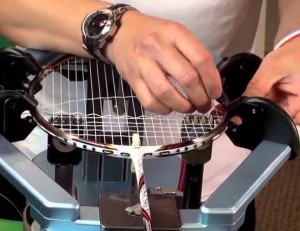 Players often ask: “Why do basement stringers charge less than store stringers?”
Players often ask: “Why do basement stringers charge less than store stringers?”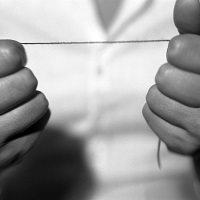 Choosing the best string tension for your badminton frame is often a case of choosing between trade offs. For example, stringing at a racquet’s maximum tension will increase your ability to control the power of the string bed, but it will also decrease string life. On the other hand, stringing the same racquet at minimum recommended tension will increase its power and extend the life of the string, but it will reduce your ability to control drop shots.
Choosing the best string tension for your badminton frame is often a case of choosing between trade offs. For example, stringing at a racquet’s maximum tension will increase your ability to control the power of the string bed, but it will also decrease string life. On the other hand, stringing the same racquet at minimum recommended tension will increase its power and extend the life of the string, but it will reduce your ability to control drop shots.
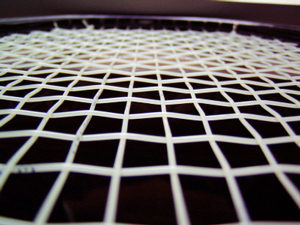 As professional stringers, we spend several hours each week fixing problems created by amateurs. Most of the time, these errors are minor and can be fixed relatively quickly. Sometimes, however, the mistakes are fatal to life of the racquet and sometimes, sadly, the racquet breaks or cracks before we can fix it.
As professional stringers, we spend several hours each week fixing problems created by amateurs. Most of the time, these errors are minor and can be fixed relatively quickly. Sometimes, however, the mistakes are fatal to life of the racquet and sometimes, sadly, the racquet breaks or cracks before we can fix it.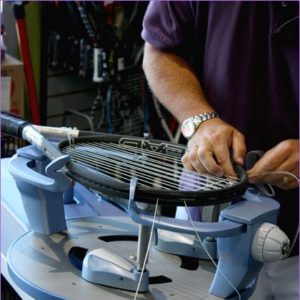 You see them everywhere, little signs cable-tied to tennis court fences or pinned to bulletin boards offering dirt cheap stringing. You see them on Craig’s List, Kijiji and a thousand other websites.
You see them everywhere, little signs cable-tied to tennis court fences or pinned to bulletin boards offering dirt cheap stringing. You see them on Craig’s List, Kijiji and a thousand other websites.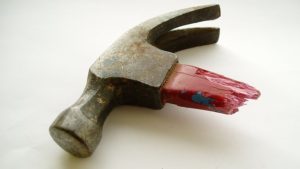 Even hammers break. Strong as the they are, they will all break eventually. So it shouldn’t surprise anyone that racquet strings break too.
Even hammers break. Strong as the they are, they will all break eventually. So it shouldn’t surprise anyone that racquet strings break too.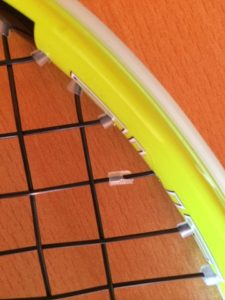 Step Two in preserving the life of your strings is to take care of your frame. Split or broken grommets are string eaters. When they are whole, they work to prevent the string from touching the sharp edges of the graphite. When they split or break, the graphite cuts through the string like a hot knife through butter.
Step Two in preserving the life of your strings is to take care of your frame. Split or broken grommets are string eaters. When they are whole, they work to prevent the string from touching the sharp edges of the graphite. When they split or break, the graphite cuts through the string like a hot knife through butter.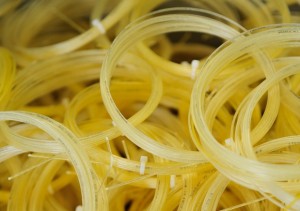 Although many tennis players are familiar with natural gut strings, squash and badminton players tend to know very little about them. Those who have heard about natural gut presume that it is too fragile to use for squash or badminton.
Although many tennis players are familiar with natural gut strings, squash and badminton players tend to know very little about them. Those who have heard about natural gut presume that it is too fragile to use for squash or badminton.
